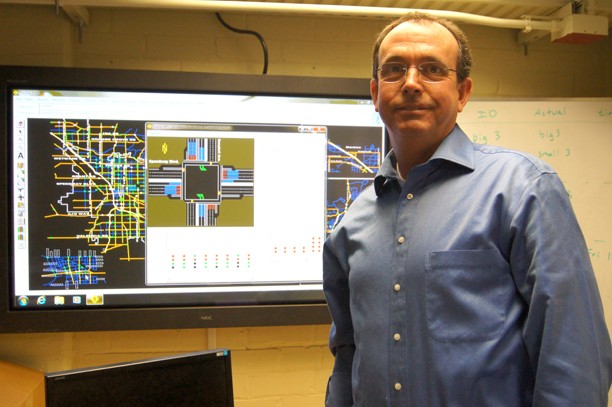A UA professor hopes to make driving safer by connecting cars through radio signals.
“As we look ahead to the next stage of roadway safety in America, connected vehicle technology has the potential to significantly reduce injuries and fatalities from crashes,” the U.S. National Highway Traffic Safety Administration said in a press release.
There is a big effort by the U.S. Department of Transportation to connect vehicles by equipping every vehicle with a radio so that they can communicate with one another, as well with the infrastructure.
Larry Head, associate professor and head of the Department of Systems and Industrial Engineering, focuses on traffic signals related to radio technology. A special radio frequency, 5.9 GHz, is reserved by the Federal Communications Commission for connected vehicles to use. Head examines how to prioritize signals on that frequency so that traffic can move more safely.
There actually is a transmitter on a pole at the intersection of Speedway Boulevard and Mountain Avenue, Head said, but it isn’t used to change traffic signals, just to check that communications are working for testing purposes.
The current system allows ambulances and fire trucks to change the traffic lights using an infrared light from a distance. “The problem is a first come, first serve design,” Head said.
Head also hopes to use the technology to help traffic move more efficiently. A bus rapid transit lane is a reserved lane specifically for buses, like the streetcar will have in Tucson when finished, Head said. A bus only comes every five to 20 minutes and the rest of the time these lanes are empty.
To allow cars in these lanes, Head proposed that cars and buses be equipped with a special radio capability so that, when a bus comes, it can send a message that essentially says, “I’m a bus; get out of my lane,” so that cars can make a safe lane change.
The vehicle connection has been in the works since the 1980s. In 1992, Head was asked to join a research team. The technology will hopefully someday become commonplace and legally required in every car in order to improve safety, Head said.
“If you think back to when seatbelts came into cars, originally there were no seatbelts in cars,” Head said. “Then they decided over safety purposes; we’ll put seatbelts in cars and this will make it safer for everybody.”
If approved, it will take five to six years for auto manufacturers to implement the technology and it’s 10 years away from being in all vehicles, Head said. However, because the implementation time is so far away, it still hasn’t been planned how or if older vehicles will be equipped.
“Last year, 37,000 people died in auto accidents,” Head said, “and we should do something about that. Why should we have accidents when we have technology that can make it safer?”









